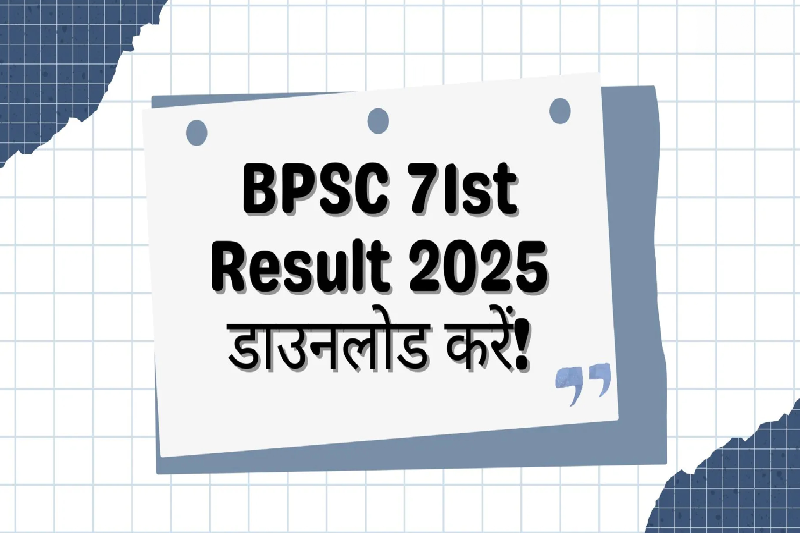
Maharashtra May Bring Back Classes 4 & 7 for State Scholarship Exam — Rural Students Likely to Benefit
In a move that could reshape the way thousands of students in Maharashtra prepare for competitive academic assessments, the state government is considering reinstating Classes 4 and 7 into the eligibility bracket for the Maharashtra State Scholarship Exam.
School Education Minister Dada Bhuse hinted at this policy shift during a programme in Gondia district, stressing that the change could particularly benefit students in rural Maharashtra, where most government-run schools only operate up to Class 4 or Class 7.
“Most schools in rural parts of Maharashtra which are run by local governing bodies are either up to Class 4 or Class 7. With scholarship exams now being conducted for Classes 5 and 8, these students were not able to obtain the benefits of it. Therefore, there are plans to reinclude Classes 4 and 7 for the scholarship exam,” Bhuse said.
Why the Change Matters
The Maharashtra State Scholarship Exam is not just about financial rewards—it’s widely regarded as an academic “pat on the back” for students who clear it with good marks. For many children, especially in under-resourced rural areas, this recognition serves as a powerful motivator to continue their education with dedication and confidence.
Before 2016, the exam was traditionally held for Classes 4 and 7 under the Maharashtra State Board. However, a policy change by the then government shifted the eligibility to Classes 5 and 8. While the intention was to standardise academic readiness, the shift inadvertently left out a large segment of rural students who complete their schooling at the earlier grades and thus never get a chance to participate.
Voices from the Education Sector
The minister’s announcement has sparked a lively discussion among educators, exam coaches, and school associations.
While many agree that reintroducing Classes 4 and 7 would level the playing field for rural students, concerns are being raised about the potential academic load if scholarship exams are conducted for all four grades—Classes 4, 5, 7, and 8.
“It is not advised to have scholarship exams for all four classes as it might add unnecessary burden on students,” a senior teacher from a Mumbai school commented.
An experienced coach for scholarship exams in Mumbai echoed the need for careful planning:
“Any change in scholarship exam should be announced well in advance so that students have adequate time to prepare.”
Need for Official Clarity
At present, there is no official circular confirming the policy change. This lack of formal communication has left students, teachers, and parents in a state of uncertainty.
Mahendra Ganpule, spokesperson for the Maharashtra School Principals Association, highlighted the confusion:
“The discussion is only being heard through the media. There is no official circular, which has left students, teachers, and parents all confused. An official order should be issued soon. Furthermore, funds will have to be allocated for additional classes.”
This call for clarity is crucial because preparing for the Maharashtra State Scholarship Exam requires a structured study approach, and schools would need to adjust academic calendars, allocate resources, and provide guidance accordingly.
What the Scholarship Exam Entails
The Maharashtra State Scholarship Exam is conducted by the Maharashtra State Council of Examinations (MSCE), Pune. The assessment evaluates students on four key subjects:
- Language
- Mathematics
- Science
- General Knowledge
The exam aims to identify and reward meritorious students, while also encouraging early academic excellence. For rural students, this recognition can often lead to better educational opportunities, sometimes even opening doors to scholarships for higher studies.
Funding and Logistical Considerations
If the plan to reintroduce Classes 4 and 7 moves forward, it will require additional funding for exam administration, logistics, and evaluation. Since the exam already involves a large student base across Maharashtra, doubling the number of eligible grades will inevitably increase costs and administrative responsibilities for the state.
Moreover, rural schools—especially those under local governing bodies—may need extra academic support to prepare students for the exam, considering differences in infrastructure and teaching resources compared to urban schools.
Balancing Opportunity and Academic Pressure
While the intent behind the move is rooted in fairness and inclusivity, experts emphasise the need to ensure that it does not overburden children. Young students, particularly in Class 4, may require more foundational learning time rather than facing the stress of competitive exams.
Education policy analysts suggest that instead of conducting the exam for all four grades, the government could alternate between the grades or create separate preparatory programs for younger students to ease them into the scholarship format.
What’s Next?
As of now, the government’s plan is still in the discussion stage. Without an official order, speculation will continue. However, the minister’s remarks have already reignited debates about how educational assessments should be structured to ensure fairness, inclusivity, and minimal stress for students.
If implemented thoughtfully, reintroducing Classes 4 and 7 could be a game-changer for rural Maharashtra, potentially allowing thousands of children access to the recognition and opportunities that the scholarship exam offers. But for now, educators, parents, and students will be watching closely for official confirmation.
In summary: Maharashtra may soon give rural students another shot at the prestigious State Scholarship Exam by adding Classes 4 and 7 back into the eligibility criteria. While the move promises to be more inclusive, its success will depend on timely official orders, proper resource allocation, and a balanced approach to avoid overburdening students.


